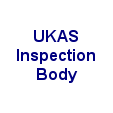Checking the competence guide
HSG264 - How it works.
|
HSG 264, which replaces and expands on the existing guide for the surveying, sampling and assessment of asbestos containing materials (MDHS 100) has been released. A link to the free download from the HSE's website is to your left. The key areas to be aware of are: Competence. It is the duty holder's responsibility to ensure that they appoint a competent organisation or person to undertake the asbestos survey.
Survey Types. There are now two classifications of asbestos survey, not three. Type 1 and Type 2 Surveys - become Management Survey. This is the standard survey that should be carried out for the continued management of asbestos in premises. The purpose of the survey is to locate, as far as reasonably practicable, the presence and extent of any suspect ACMs in the building and assess their condition. Sampling is the most common approach that has been used for surveys. However, a management survey can also involve a combination of sampling and presuming the presence or absence of asbestos. Any materials presumed to contain asbestos must also have their condition assessed (i.e. material assessment). Management surveys may involve minor intrusive work and some disturbance.The extent of intrusion will vary between premises and depend on what is reasonably practicable for individual properties. Caveat's are to be minimised as much as possible. Type 3 Survey - becomes Refurbishment and Demolition Survey. These surveys will be used to locate and describe, as far as reasonably practicable, all ACMs in the area where the refurbishment work will take place or in the whole building if demolition is planned. The survey will involve destructive inspection as necessary, to gain access to all locations, including those that may be difficult to reach. Refurbishment work may vary from relatively small to large projects. A full sampling programme is undertaken in these areas to identify possible ACMs. Even though ACm's may be identified for removal the management plan must take into account that this may not be instant so the risk must be manged up until the point of removal. Survey Restrictions and Caveats The value and usefulness of the survey can be seriously undermined where either the client or the surveyor imposes restrictions on the survey scope. They should be included only where absolutely necessary, and should be fully justified by both the Duty Holder and the surveyor as it can undermine the management plan. All restrictions and caveats must be documented within the report. |
|
|








